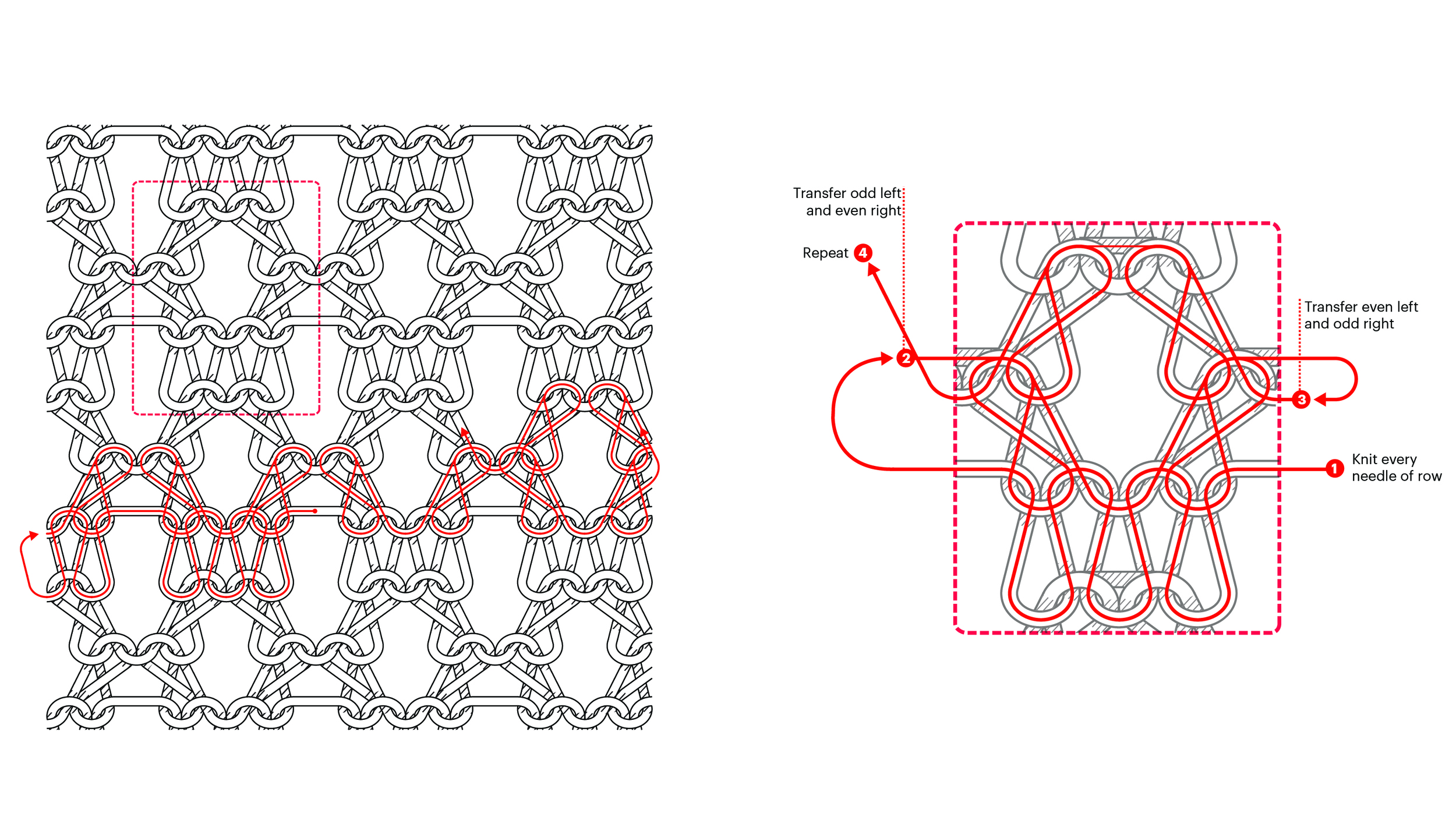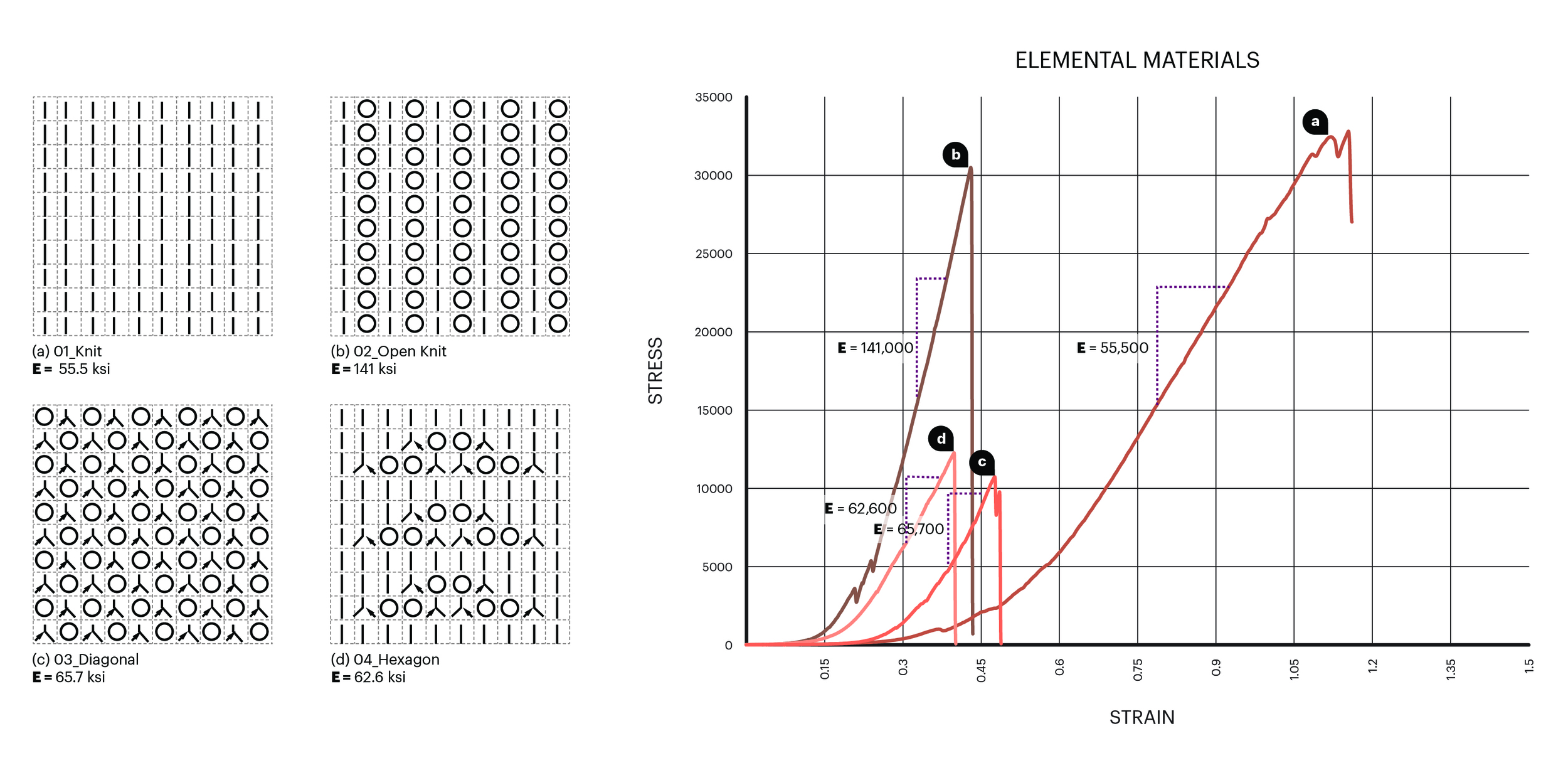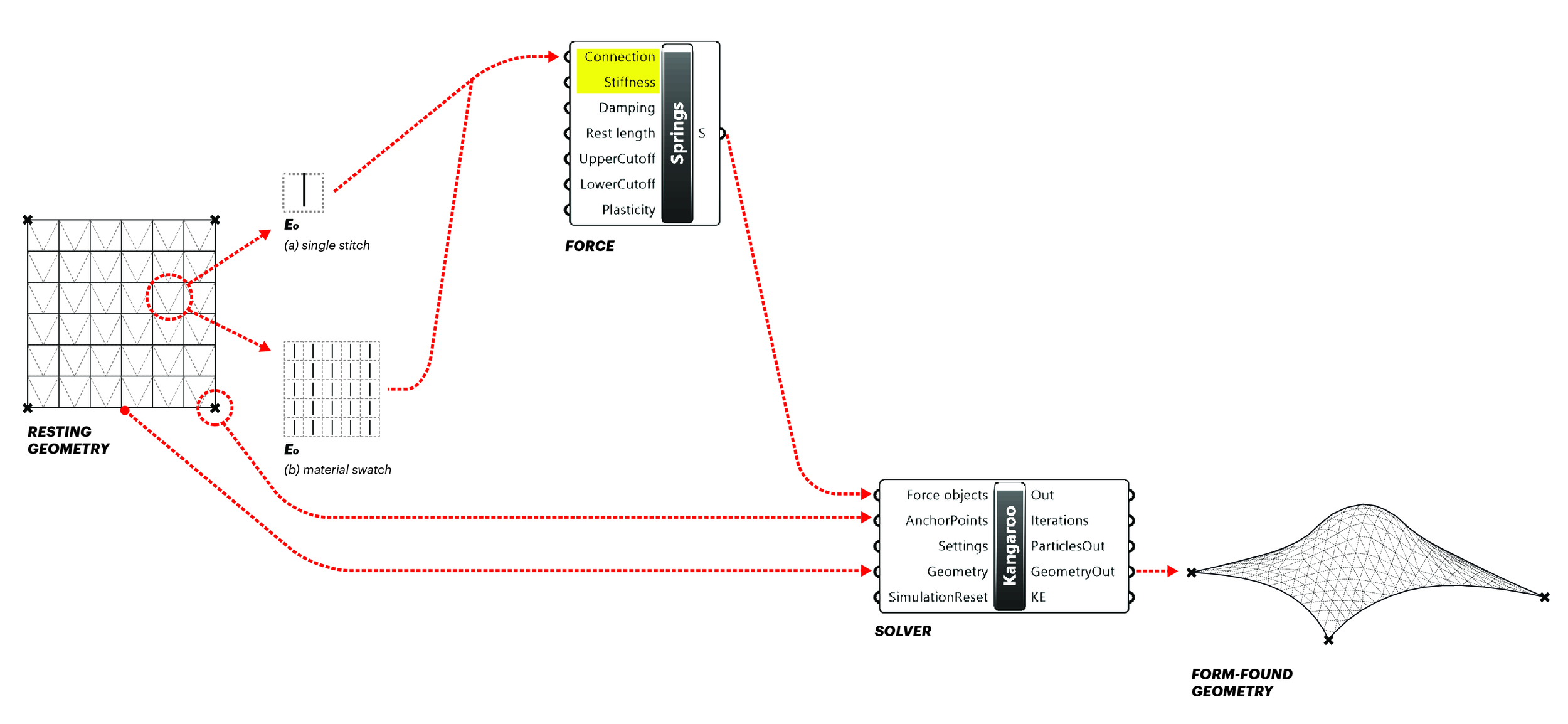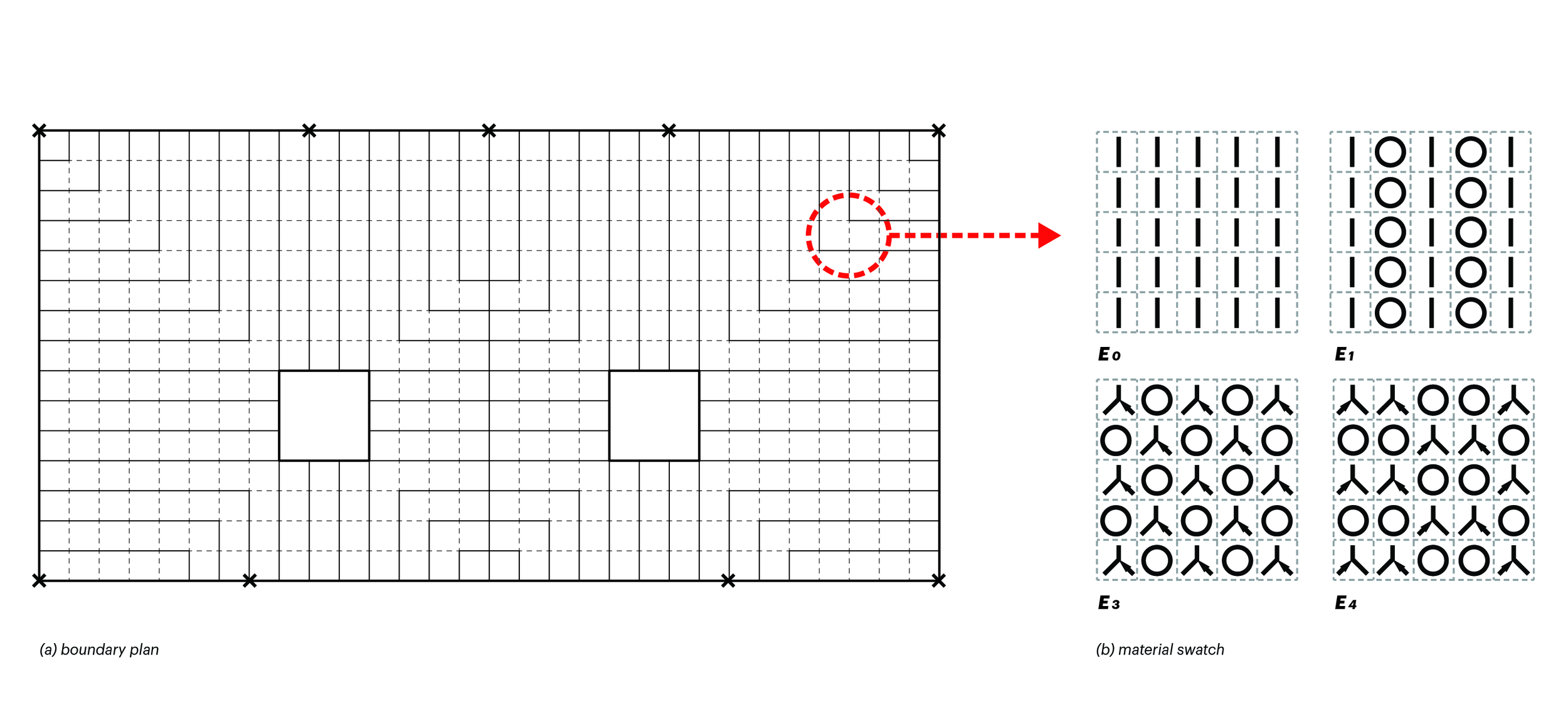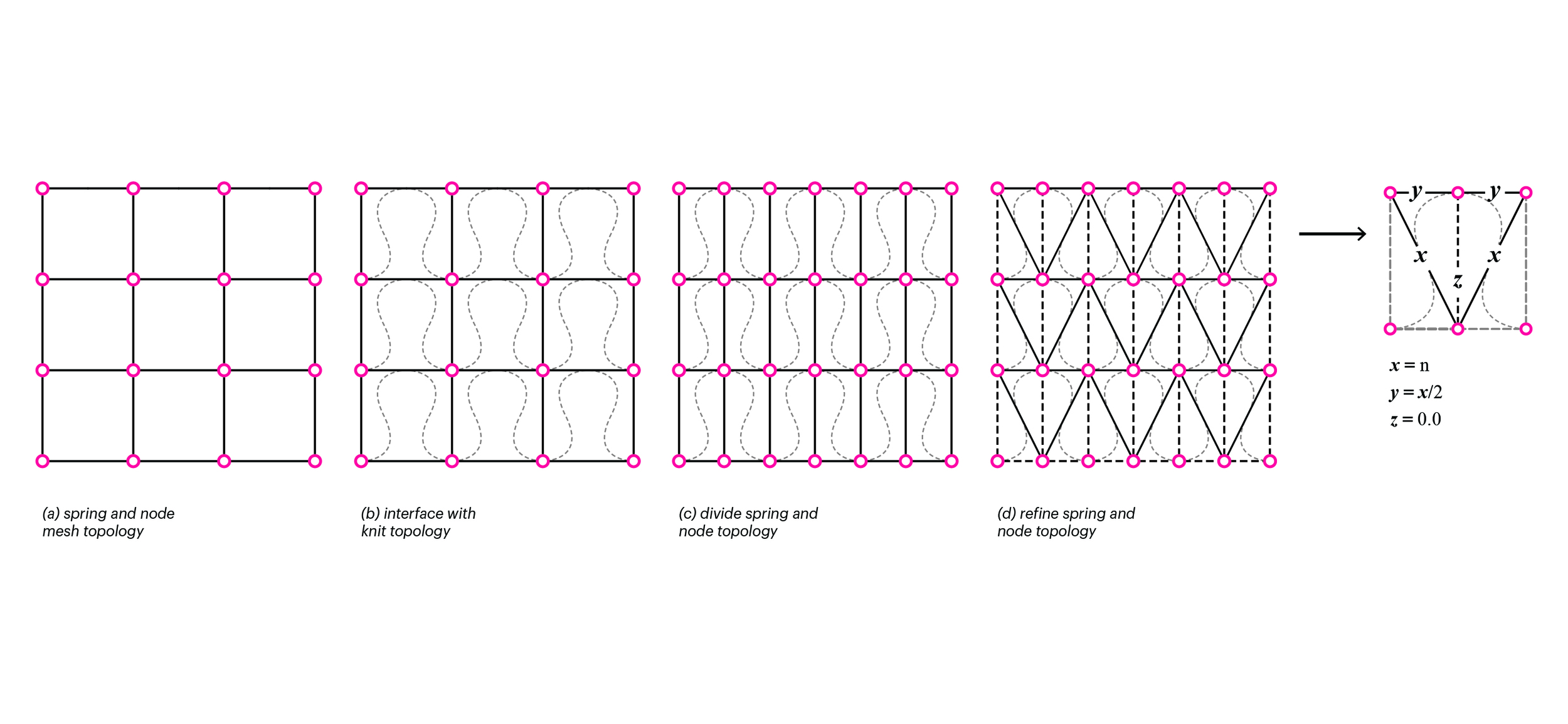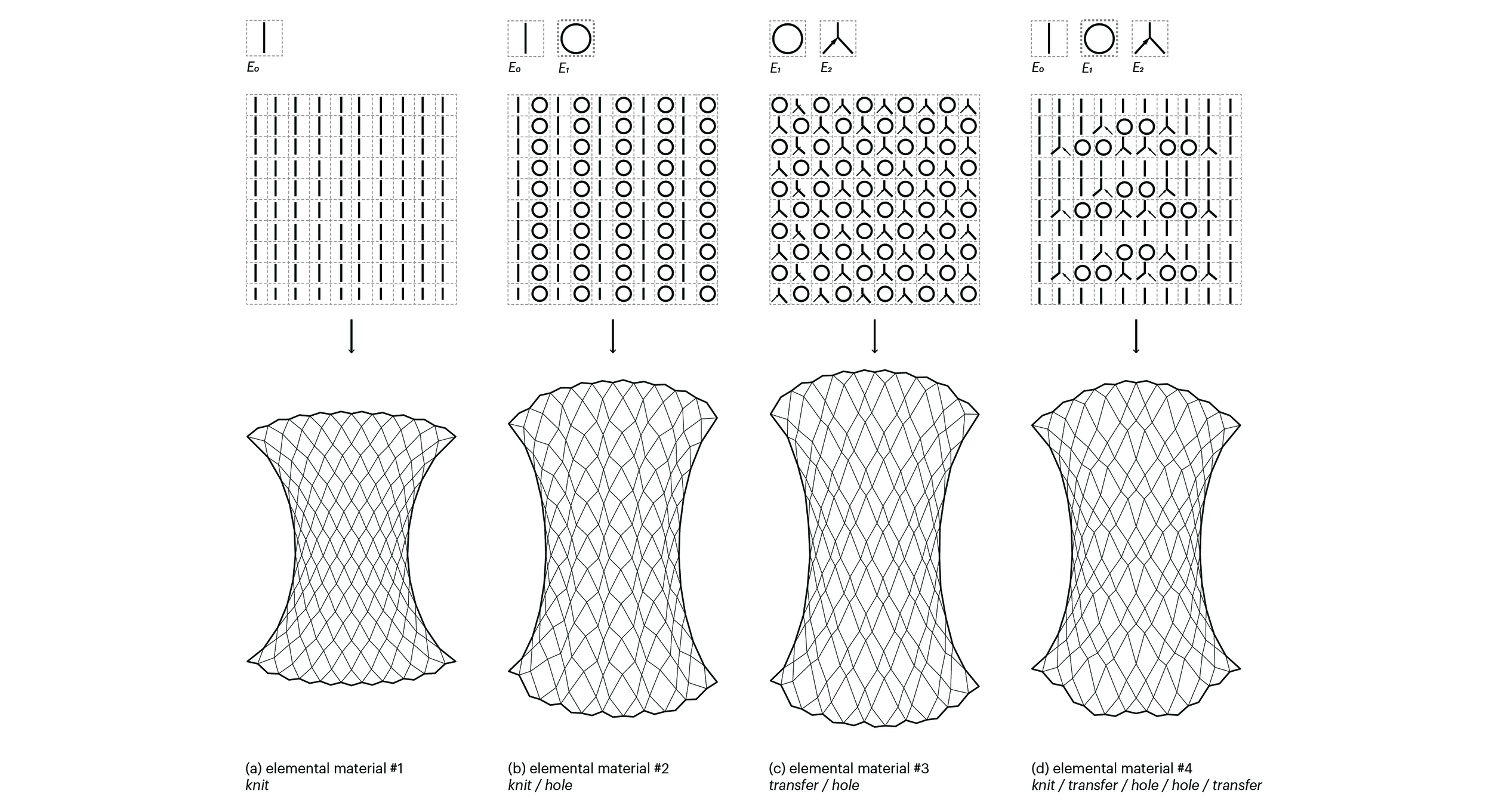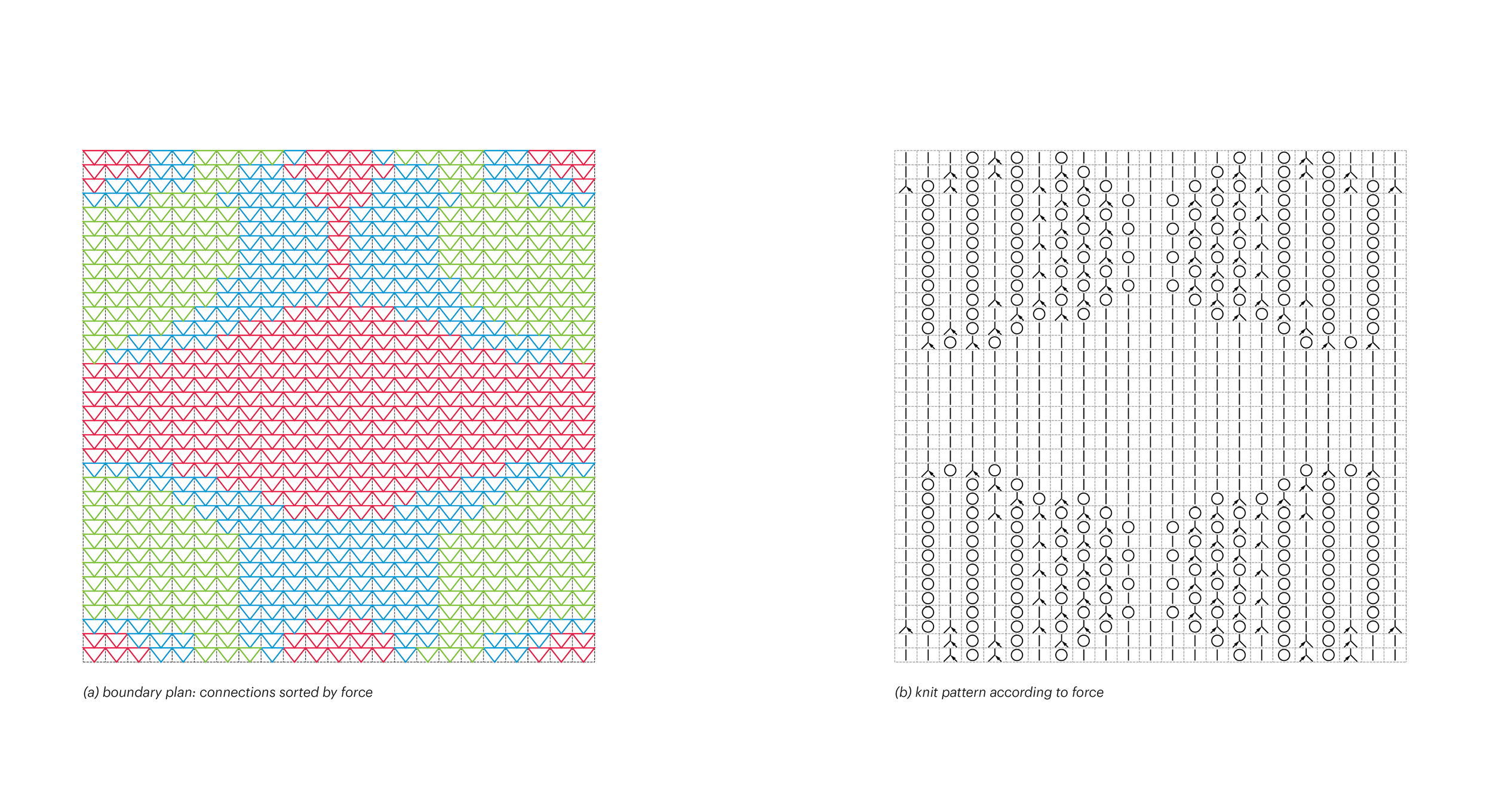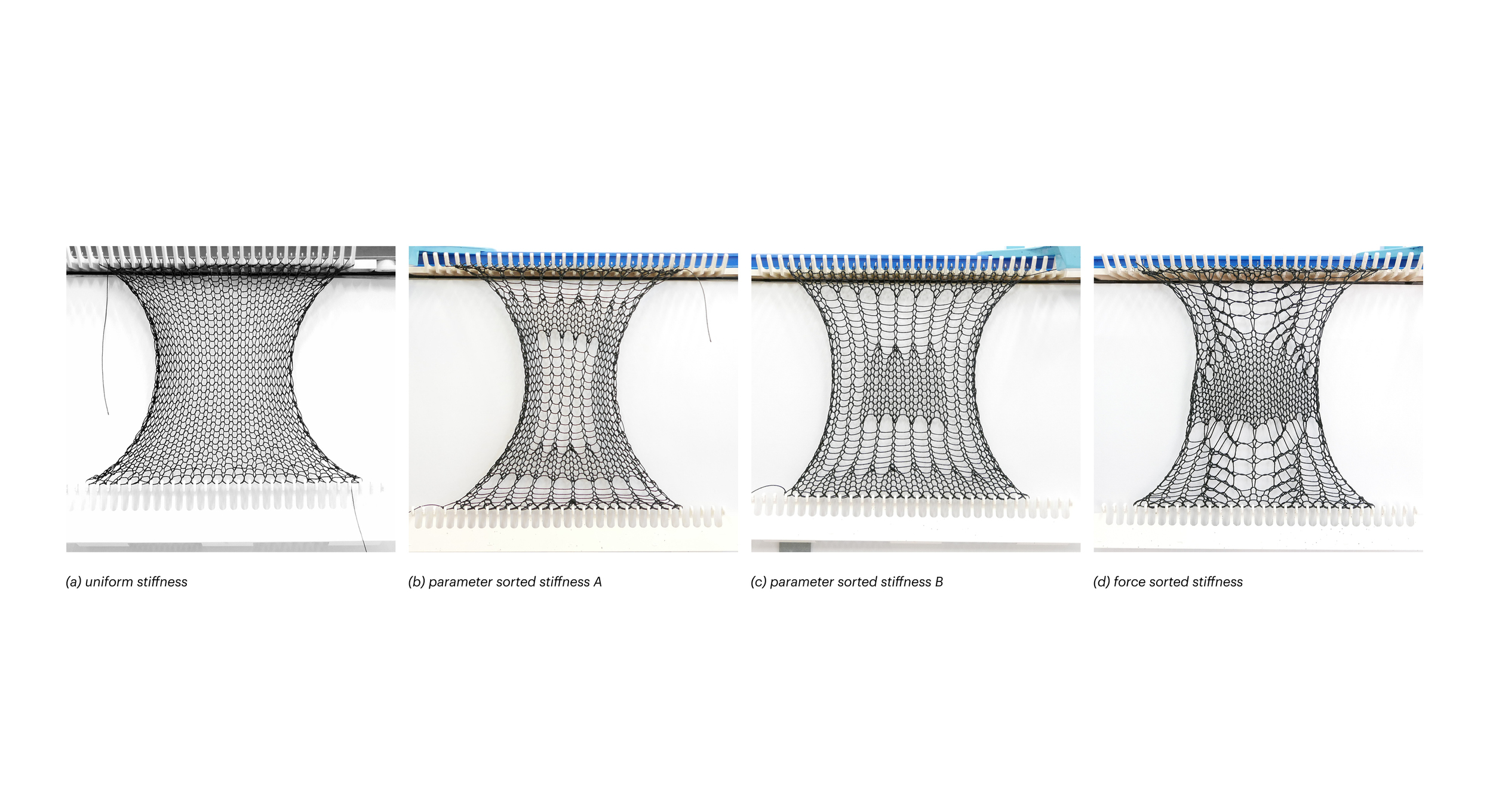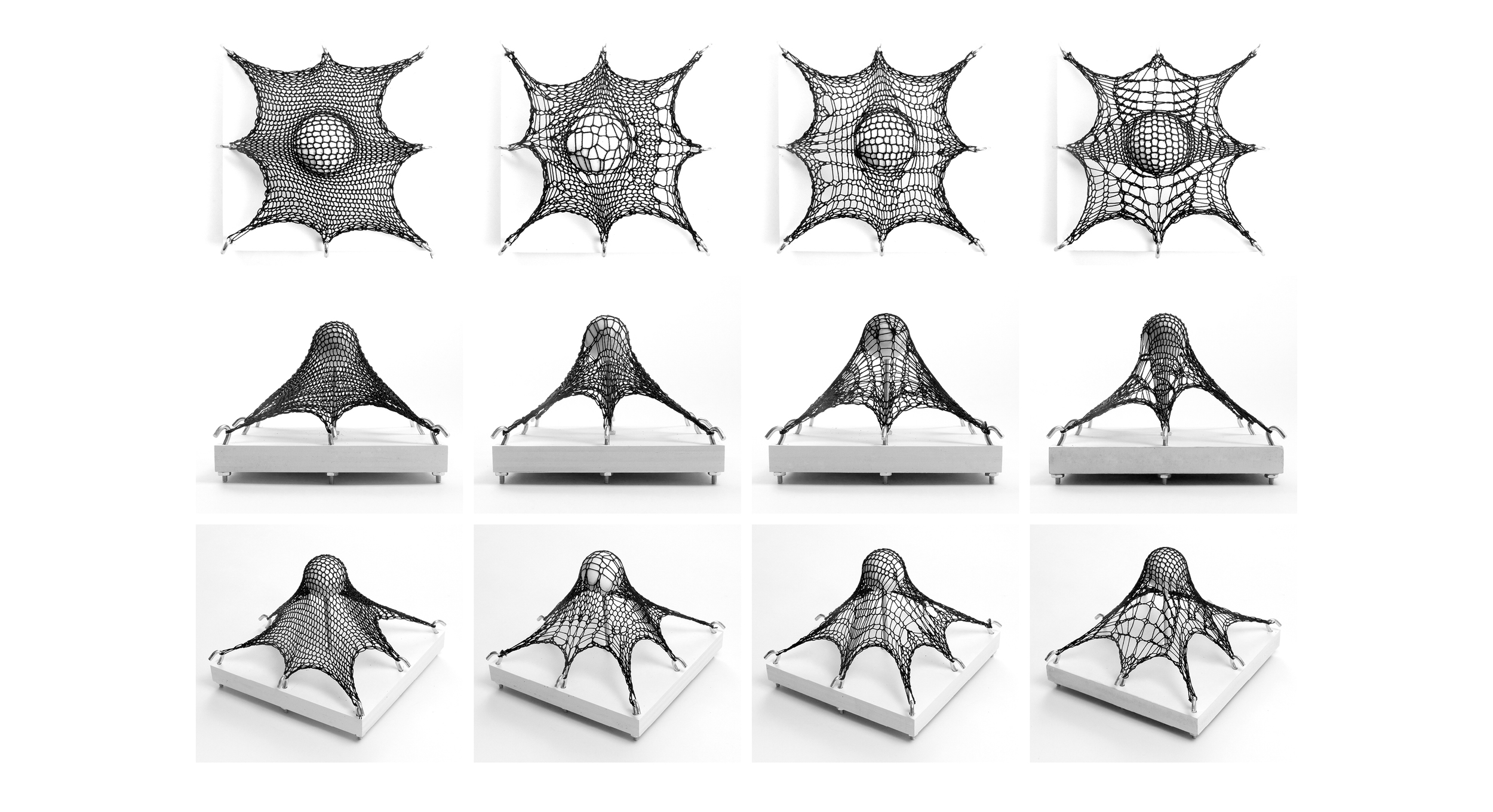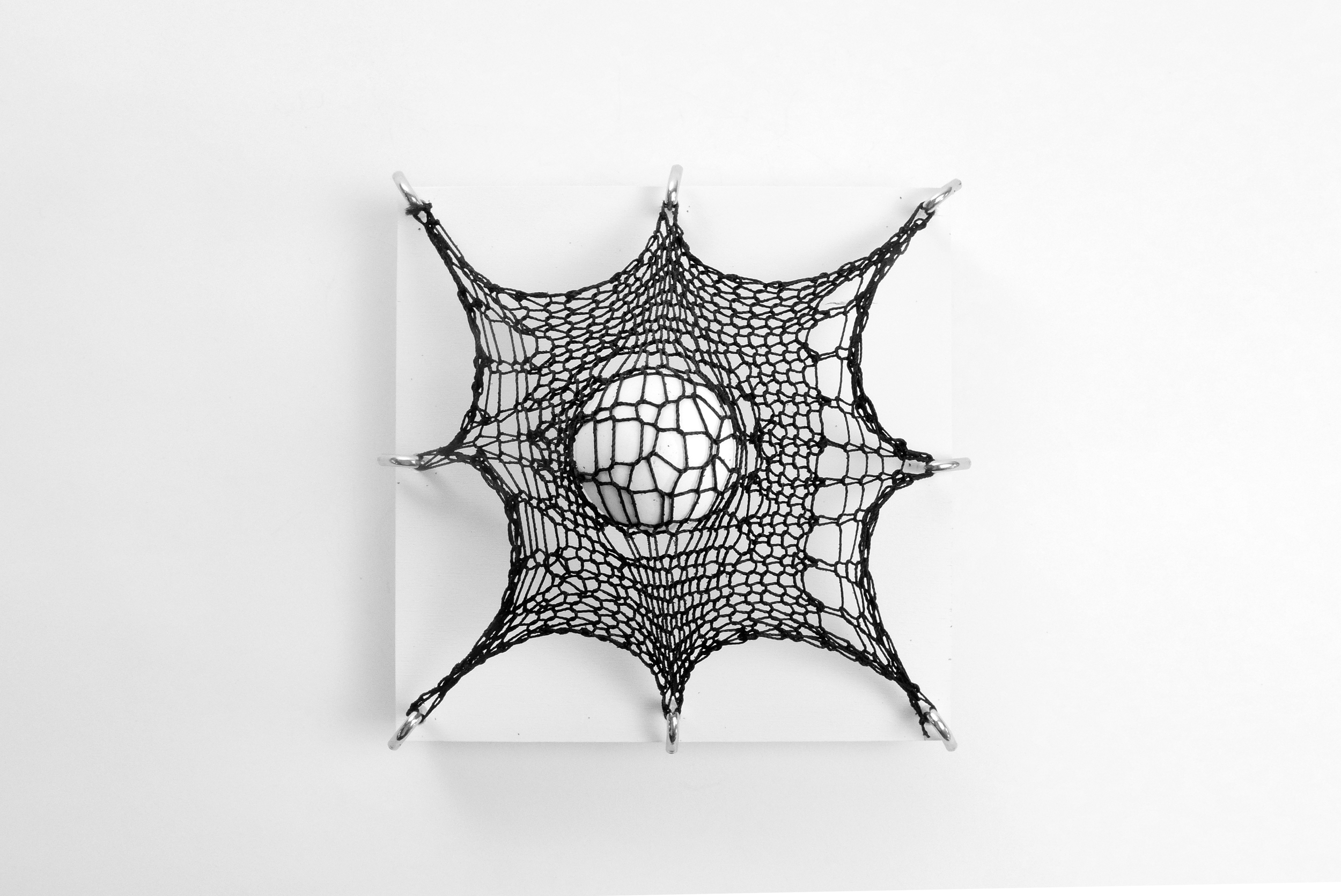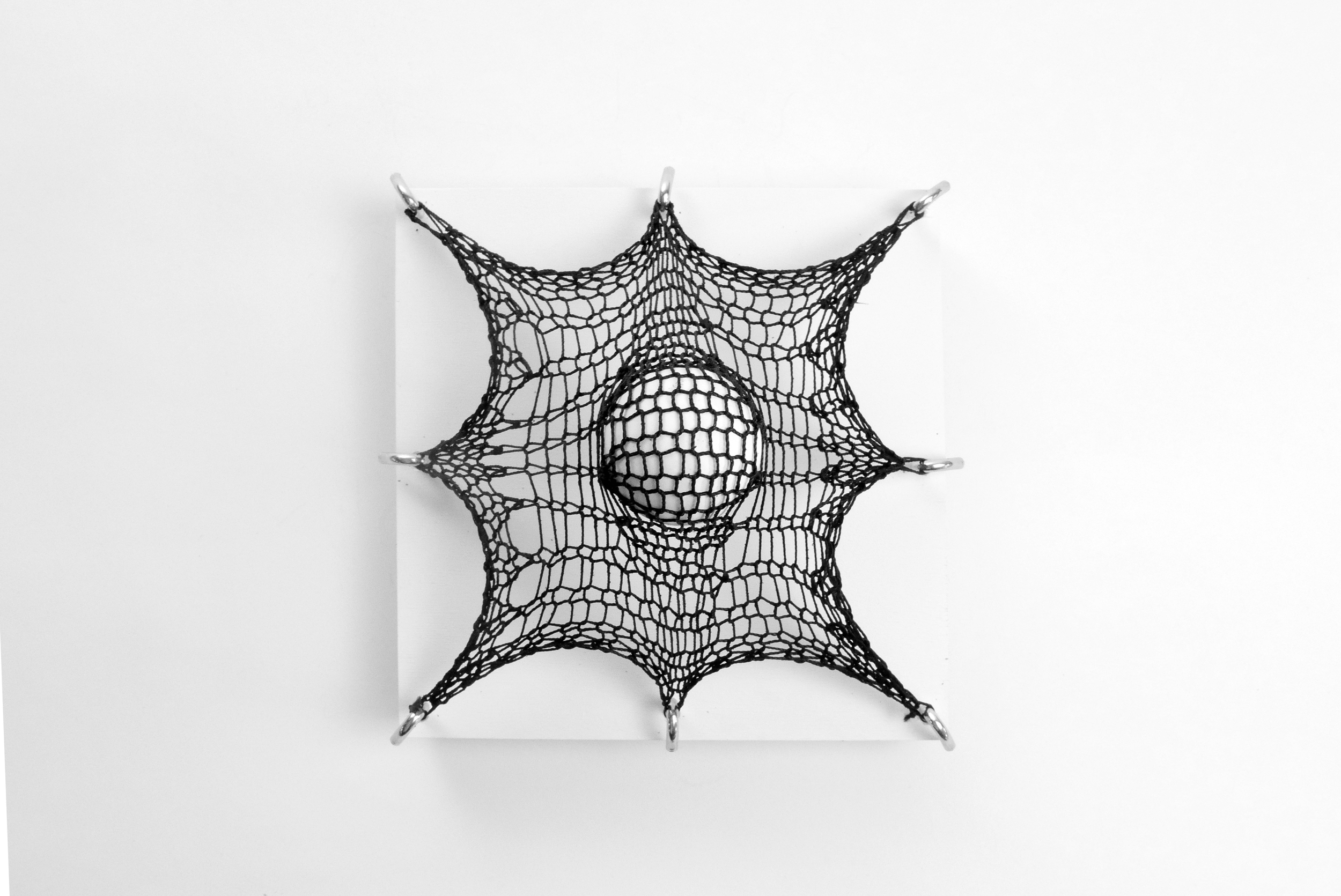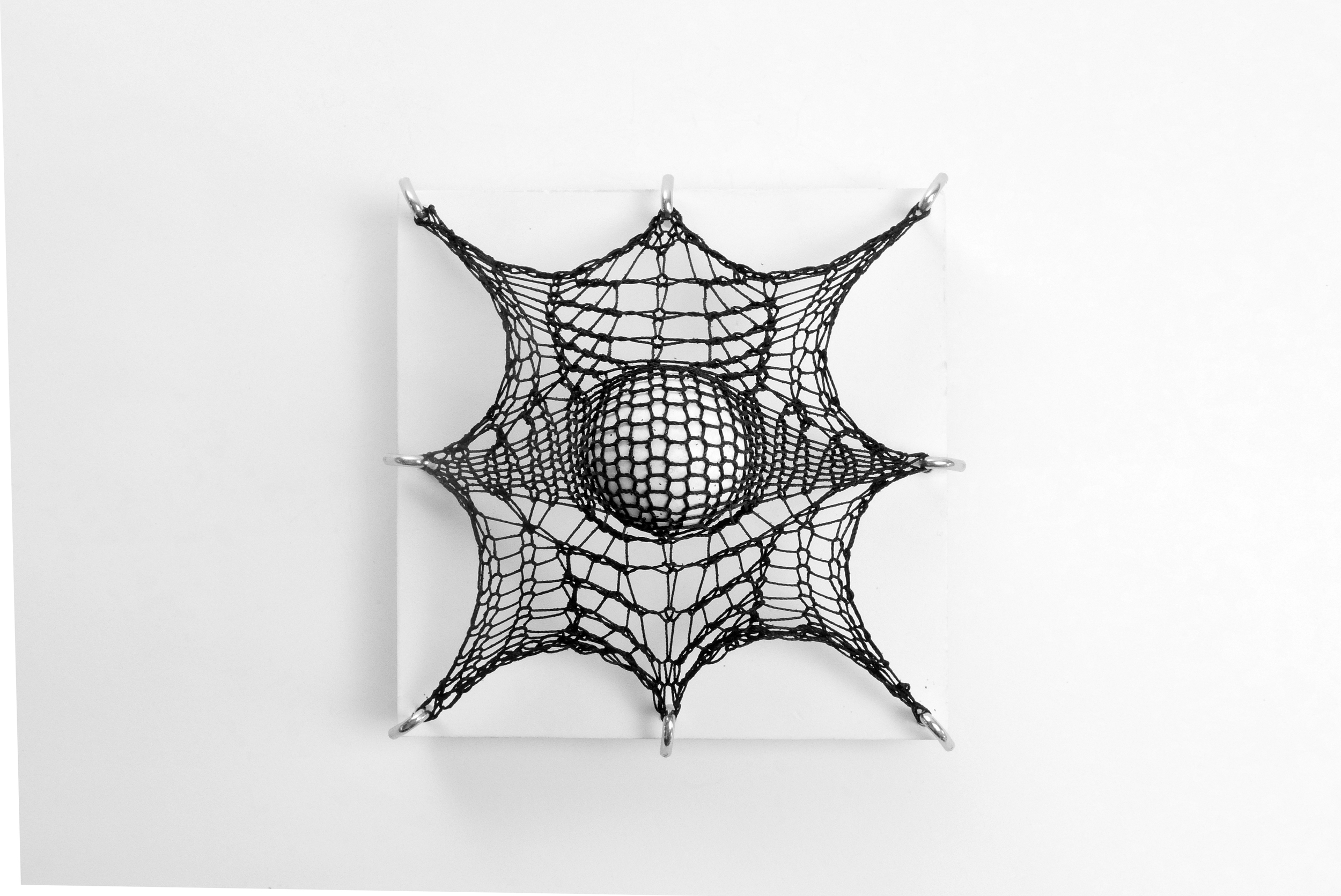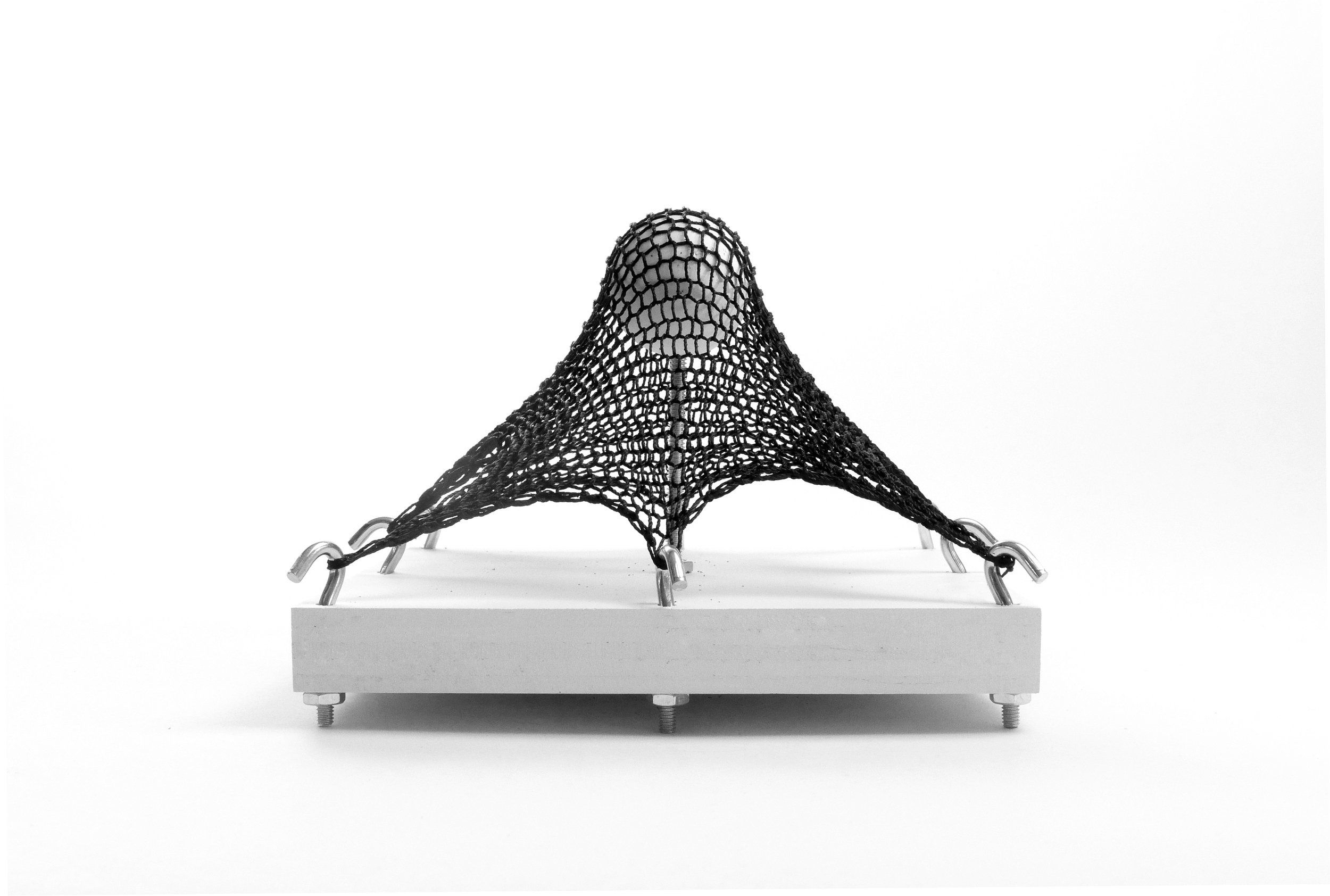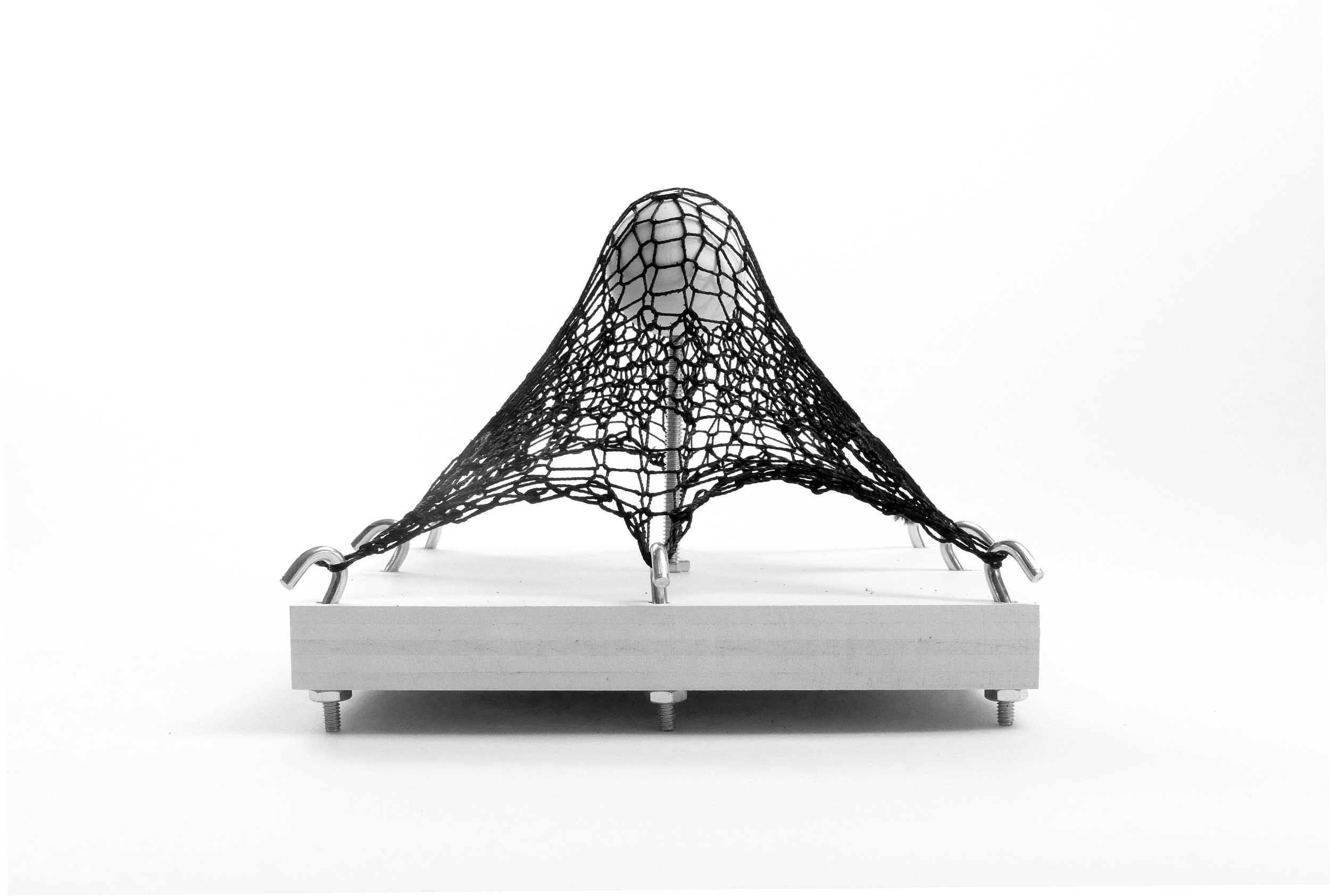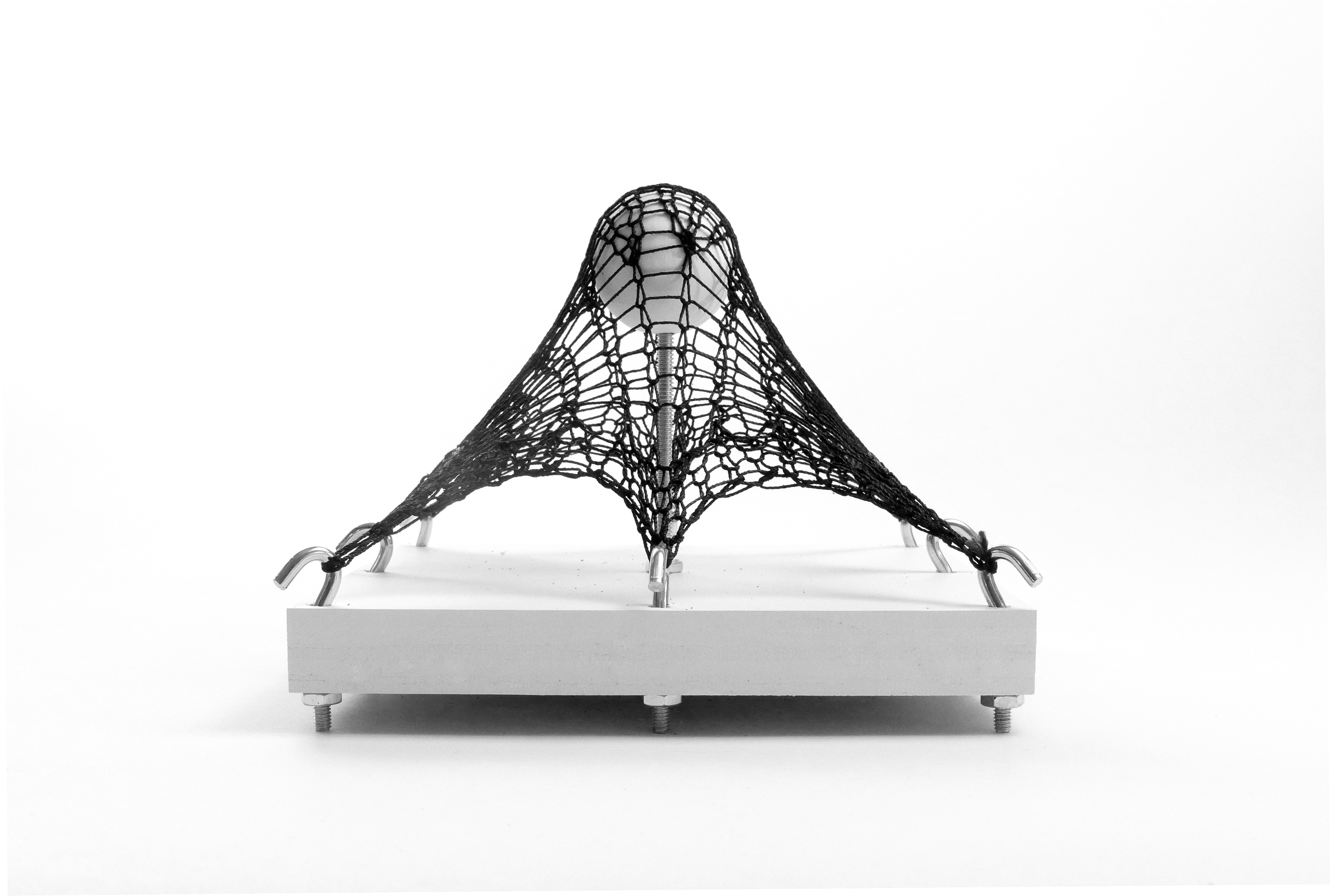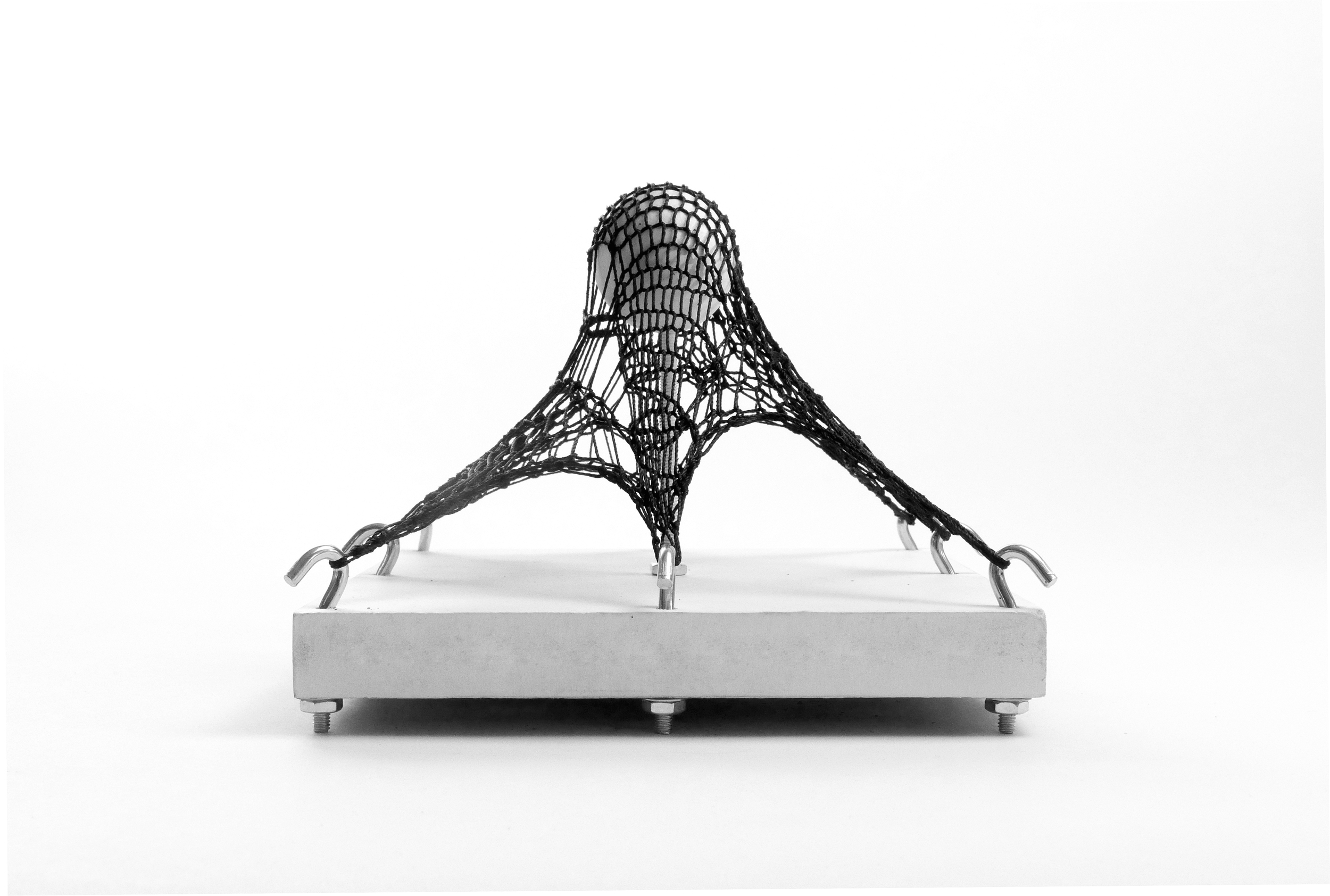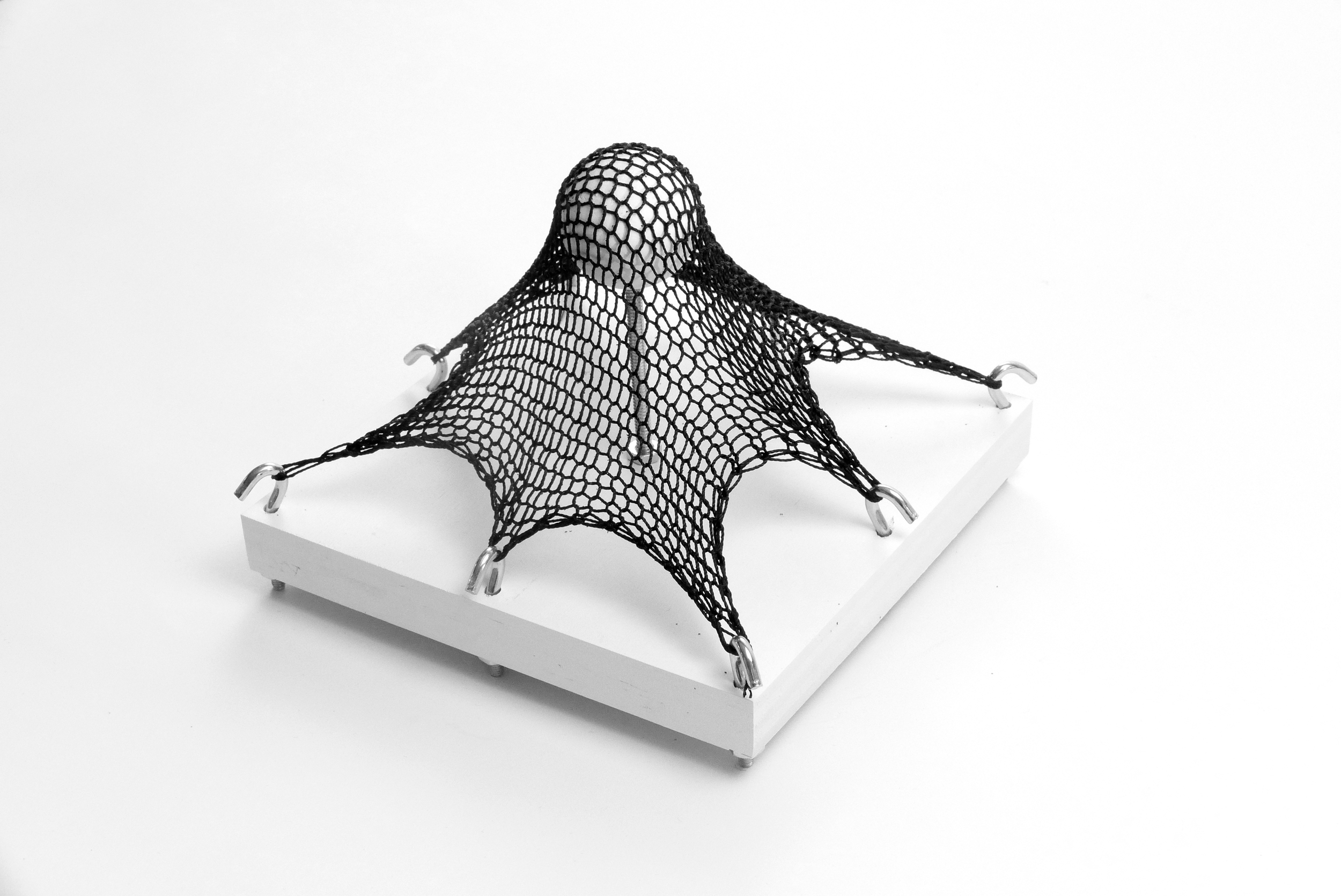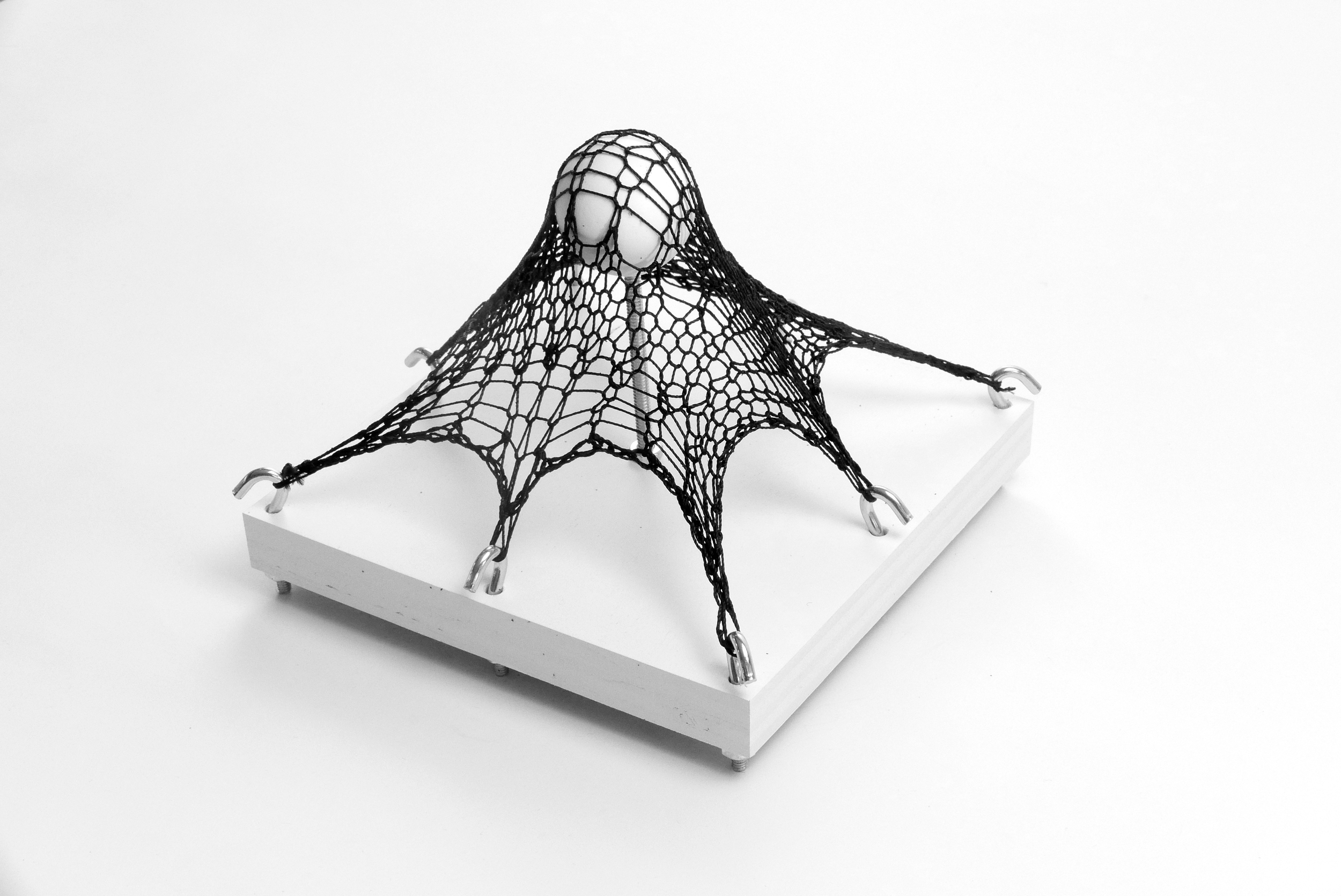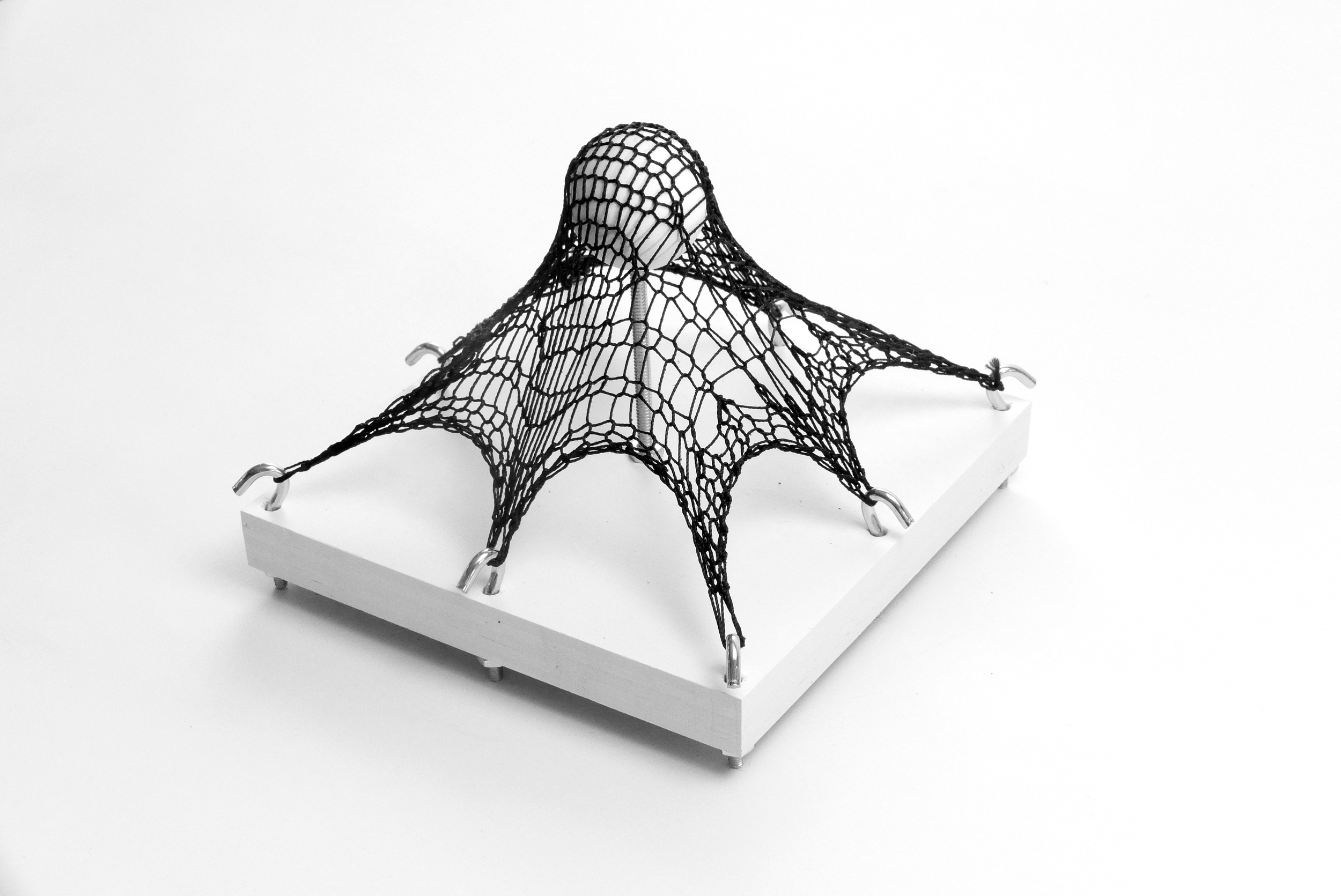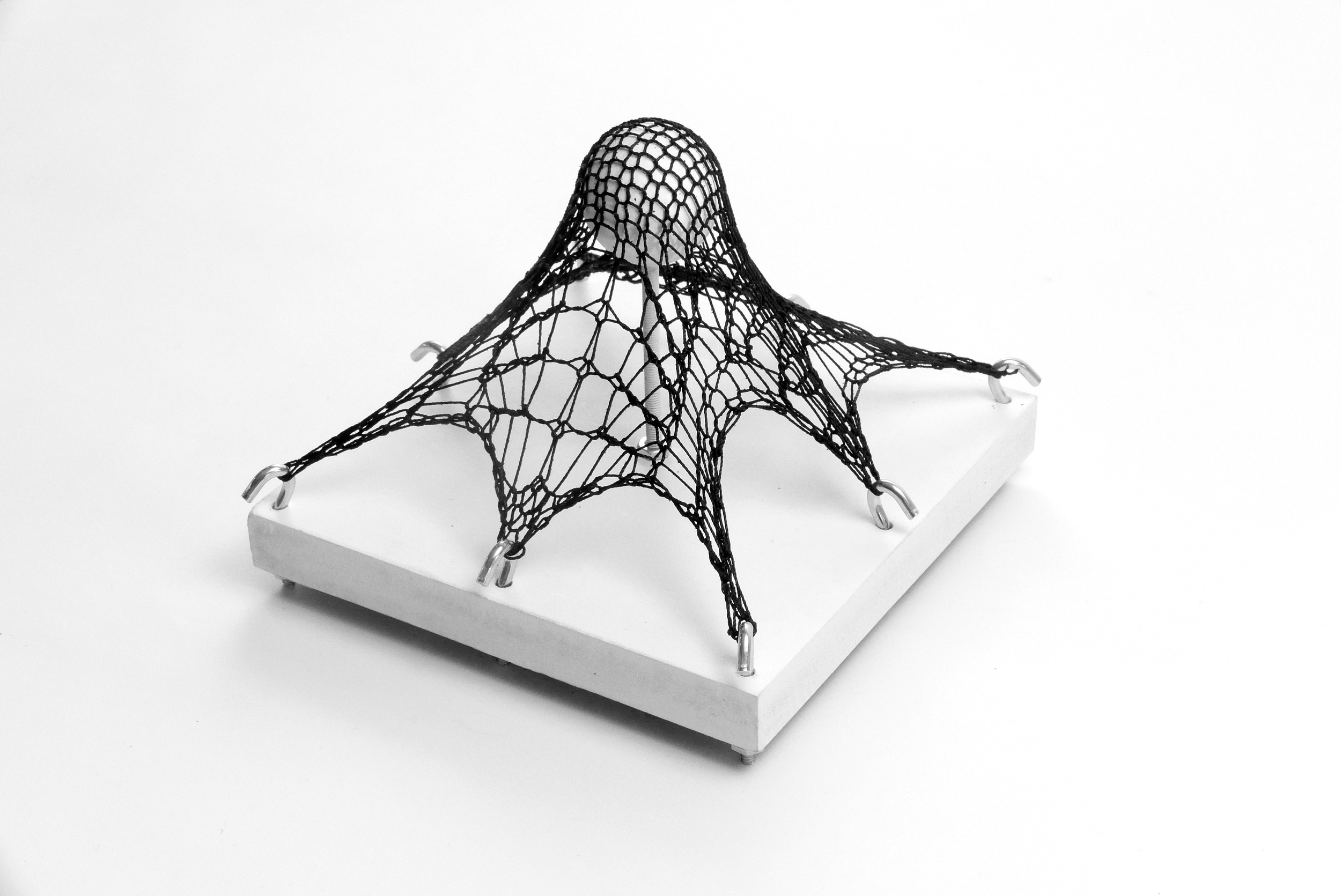KNITTING BEHAVIOR: A Material-Centric Design Process
While we construct our built environment from materials, we often do not program the materials from which we build. Historically, architects have been limited to materials with un-programmed internal structures -- such as wood, stone, glass, steel, or concrete -- neglecting assemblies with properties that derive from a material and its internal organization. This thesis states a new architecture may emerge if the programming of material assemblies is within the control of the designer.
My research explores computation as a communicative device between the physical and the digital, establishing a conversation between a material assembly and a digital model as a tool to inform the logic of the assembly’s internal organization.
This manifests through the technique of knitting, a material practice defined by pattern as rule-based code. Whereas traditionally the pattern is a static visual representation, in my research it is both the physical sequence of stitches and the dynamic properties of each stitch within a digital model. The dynamic properties of the physical material communicate through the knit pattern to the digital model, which explores the possibilities of form within the constraints of the material to remap the pattern’s code, thereby re-informing the physical.
My research focuses on the development of knit material assemblies for tension activated architectural forms. Currently designers lack a framework for understanding how the topology of a knit structure can align with formal and structural motivations. Therefore, my primary goal is to establish a system that allows for a recursive investigation of both the physical and the digital through the computational device of a knit pattern.
The knit pattern is the code which assigns the local arrangement of stitches to the physical material assembly and activates the global characteristics of the form in the digital model. Programming the pattern to align with formal motivations requires a quantification of the behavior of each stitch. Comparative structural loading tests the stiffness of the physical assembly in order to activate a digital model as a particle-spring system that form-finds via an equilibrium of forces. The force exerted on each spring in the model then generates a new knit pattern according to the unique behaviors of the form, shifting the topology of the knit material assembly to better suit the formal motivations.
The play between the physical and the digital is recursive, experimental, and interpretative – each informs the other while never truly resulting in the same output.
2014-2015 Thesis Research
SMArchS Design & Computation MIT
Advisor: Larry Sass
Readers: Caitlin Mueller & Brandon Clifford
Link to thesis coming soon!



